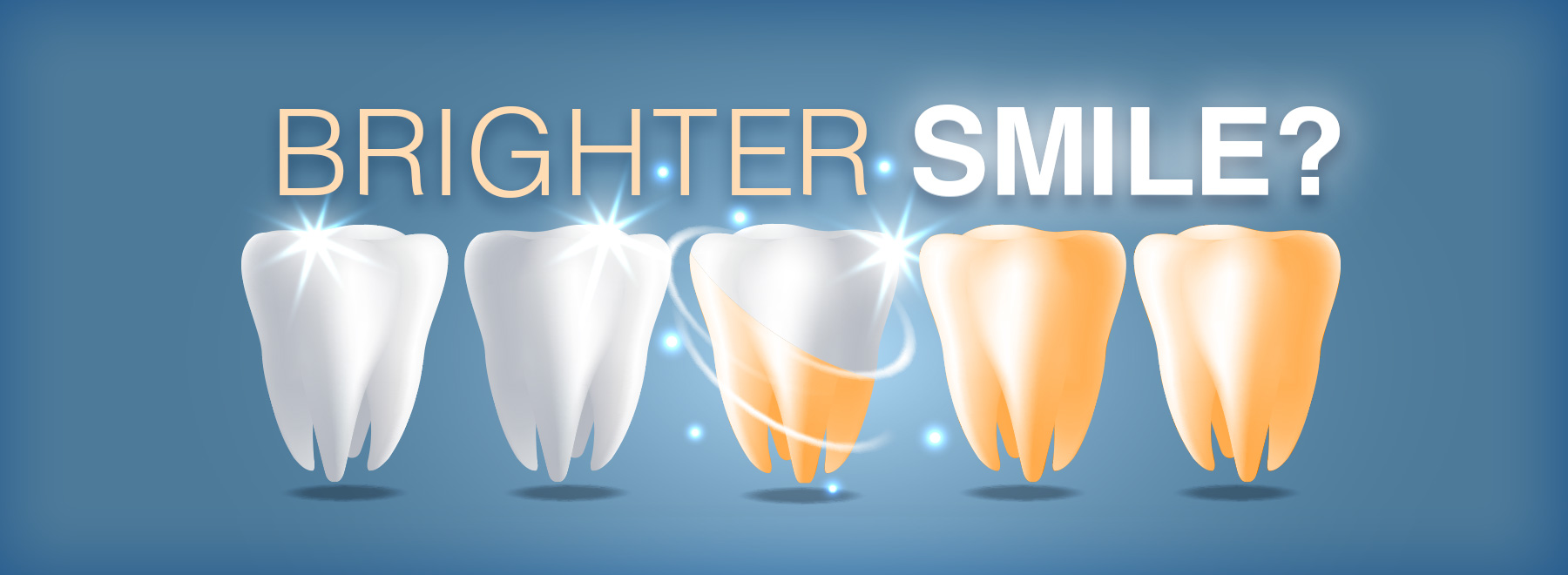OTC or dental visit? How to choose best whitening options
We may be born with pearly white teeth, but tobacco use, lots of tea and coffee or the simple toll that age takes can leave you with a yellow-tinged smile.
Some patients seen at clinics run by the University of Mississippi School of Dentistry seek a solution through teeth whitening, a procedure that can significantly lighten discoloration on teeth by attacking stained particles and breaking them down.

If you’re considering the procedure, Dr. James Lott, associate professor of care planning and restorative sciences in the School of Dentistry, said to determine how quickly you want results, how dramatic you want them to be and how much you’re comfortable spending to get there.
“There are two main products for teeth bleaching - hydrogen peroxide and carbamide peroxide - both strong oxidizing agents,” said Lott, who sees patients at the University Dentists clinic on the UMMC campus. “They go into the pores and small areas on the teeth where stains are, and it makes the stains less noticeable.”
Patients have a number of options in their quest to have whiter teeth, ranging from inexpensive “whitening” toothpastes to procedures at a dental office that could cost between $400-$600, Lott said. These options have in common the use of hydrogen or carbamide peroxide, but the application method and concentration will vary widely, he said.
“In a dental office, typically a gel is applied to the teeth after a barrier is placed over the gums, or a tray is custom created for you that is filled with the gel and positioned similarly to a mouth guard over the teeth. If you come to a dental office and get this done, you could do it in one visit with a higher concentration of bleach.”
That differs from kits purchased over the counter, such as strips containing gel that are placed over the teeth or “paint-on” substances containing peroxide. Those treatments must be repeated, sometimes four or five times, in order to get results, Lott said.
“It’s the same active ingredients as used in office, but at a lesser concentration,” he said. “It could take a couple of weeks to get what you want. The time payoff is the difference. Something over the counter can get you there, but it’s a longer trip.”
Different stains respond differently to whitening, Lott said. Some people’s teeth are gray-tinged, not from staining, but from medications their mothers might have taken during pregnancy.
“Teeth with a yellow stain typically respond best to bleach,” he said. “Teeth that are brown are more stubborn, and teeth with a gray tone are more difficult to bleach.”
The exterior white enamel most people are born with can wear away with age, revealing underneath a more yellow surface that can’t be whitened, Lott said.
“And a crown or filling will stay the same color and can’t be bleached. That could make your teeth appear more imbalanced.”
There are a few side effects to whitening, but the main ones are temporary tooth sensitivity and gum irritation. He prefers patients having in-office procedures forego local anesthesia so they can flag any sensitivity or pain during the whitening.
“If you don’t have proper oral hygiene or if you have gum disease, you need to get that under control before having your teeth whitened,” he said.
If a patient opts to purchase a whitening gel or strips over the counter and experiences sensitivity, Lott advises them to take a break from the product for four or five days and then resume its use. Those treatments can cost in the $40-$60 range, he said.
“My personal preference is that if a patient would like to have their teeth whitened, to advise them to try white strips purchased over the counter for a week,” Lott said. “That might satisfy what they want for a lot less money, and if it doesn’t, it gives me an idea of how their teeth responded. If they had gum sensitivity, that would help me decide how to treat them.”
Lott and the American Dental Association advise patients to use over-the-counter products with labeling that carries the ADA Seal of Acceptance.
“If that’s the case, it’s deemed effective and safe,” he said. “But any misuse or overuse of a product can be detrimental.”
For more information about dentistry and oral health care or to make an appointment, call University Dentists at (601) 984-6185.
The above article appears in CONSULT, UMMC’s monthly e-newsletter sharing news about cutting-edge clinical and health science education advances and innovative biomedical research at the Medical Center and giving you tips and suggestions on how you and the people you love can live a healthier life. Click here and enter your email address to receive CONSULT free of charge. You may cancel at any time.



